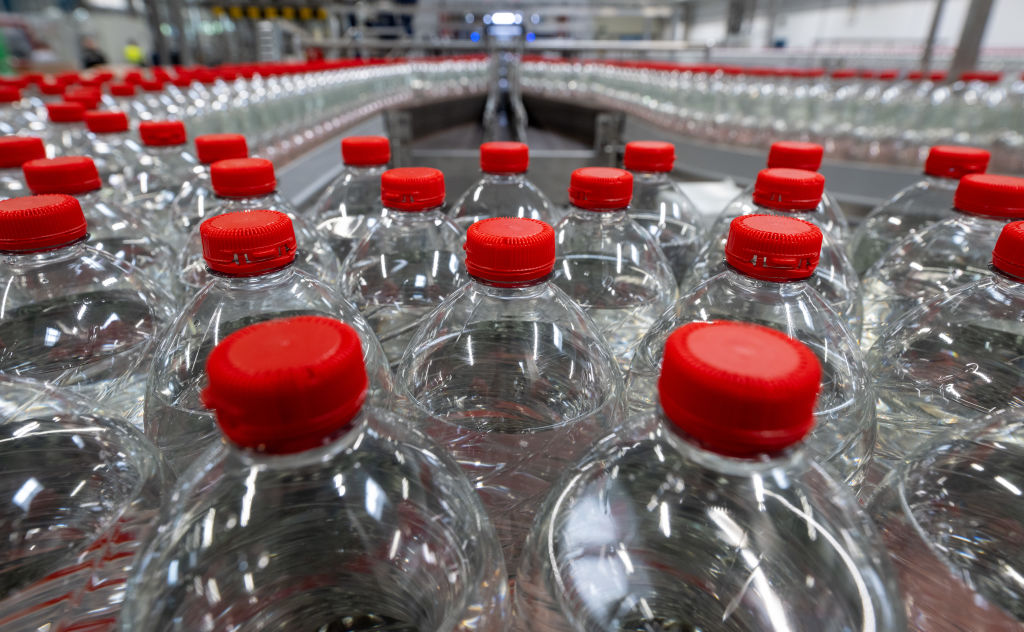Microplastics in soda bottles increase the more you open them to drink
Six different forms of plastic have been found in Coca-Cola and Schweppes soda, according to a report released this week by a French non-profit.
In order to simulate actual use, the organization Agir pour l'environnement (Act for the Environment) used two laboratories to perform research on the possible presence of plastic nano- and microparticles when the bottles are opened once, ten, or twenty times.
Six distinct polymers were identified through investigation of the plastics contained in the paper.
According to the statement released by the organization, "manufacturers declare only two polymers in contact with the beverage: [polyethylene] PE for the cap and PET for the bottle," which is why the group characterized the results as "surprising".
According to Magali Leroy, who oversees surveys and analysis for Agir, these findings "call into question the Coca-Cola and the French health authorities, who must guarantee consumers [a container] that does not expose them to molecules whose health impact cannot be ruled out."
A "substantial amount" of nanoparticles
Four microparticles were discovered for every liter of Coca-Cola and 4.6 microparticles for every liter of Schweppes when the bottles were opened for the first time.
46 microparticles for one liter of Coca-Cola and 62 microparticles for one liter of Schweppes were found after opening the bottles 20 times.
According to the author, once the bottle is opened frequently, there's a chance that the plastic top breaks down and releases more particles.
Nearly all of the detected microparticles were smaller than 100 micrometers (µm), and all of them were smaller than 500 µm. Less than 50 µm separated the majority of the particles connected to the apertures.
Both sodas had a "large quantity" of nanoparticles as well.
According to the paper, their asymmetrical structure "favours their interaction either with other particles, combining the effects of several polymers," and it also makes it easier for them to come into contact with human cells.
The NGO urged many French authorities to follow recommendations by contacting them.
39,000–52,000 microplastics are consumed annually.
When the NGO released their study two years ago, it brought attention to the fact that nine different brands of bottled water sold in France included plastic microparticles.
According to estimates from earlier studies, a person's annual intake of microplastic particles from dietary sources might vary from 39,000 to 52,000.
In order to simulate actual use, the organization Agir pour l'environnement (Act for the Environment) used two laboratories to perform research on the possible presence of plastic nano- and microparticles when the bottles are opened once, ten, or twenty times.
Six distinct polymers were identified through investigation of the plastics contained in the paper.
According to the statement released by the organization, "manufacturers declare only two polymers in contact with the beverage: [polyethylene] PE for the cap and PET for the bottle," which is why the group characterized the results as "surprising".
According to Magali Leroy, who oversees surveys and analysis for Agir, these findings "call into question the Coca-Cola and the French health authorities, who must guarantee consumers [a container] that does not expose them to molecules whose health impact cannot be ruled out."
A "substantial amount" of nanoparticles
Four microparticles were discovered for every liter of Coca-Cola and 4.6 microparticles for every liter of Schweppes when the bottles were opened for the first time.
46 microparticles for one liter of Coca-Cola and 62 microparticles for one liter of Schweppes were found after opening the bottles 20 times.
According to the author, once the bottle is opened frequently, there's a chance that the plastic top breaks down and releases more particles.
Nearly all of the detected microparticles were smaller than 100 micrometers (µm), and all of them were smaller than 500 µm. Less than 50 µm separated the majority of the particles connected to the apertures.
Both sodas had a "large quantity" of nanoparticles as well.
According to the paper, their asymmetrical structure "favours their interaction either with other particles, combining the effects of several polymers," and it also makes it easier for them to come into contact with human cells.
The NGO urged many French authorities to follow recommendations by contacting them.
39,000–52,000 microplastics are consumed annually.
When the NGO released their study two years ago, it brought attention to the fact that nine different brands of bottled water sold in France included plastic microparticles.
According to estimates from earlier studies, a person's annual intake of microplastic particles from dietary sources might vary from 39,000 to 52,000.

Comments
Post a Comment